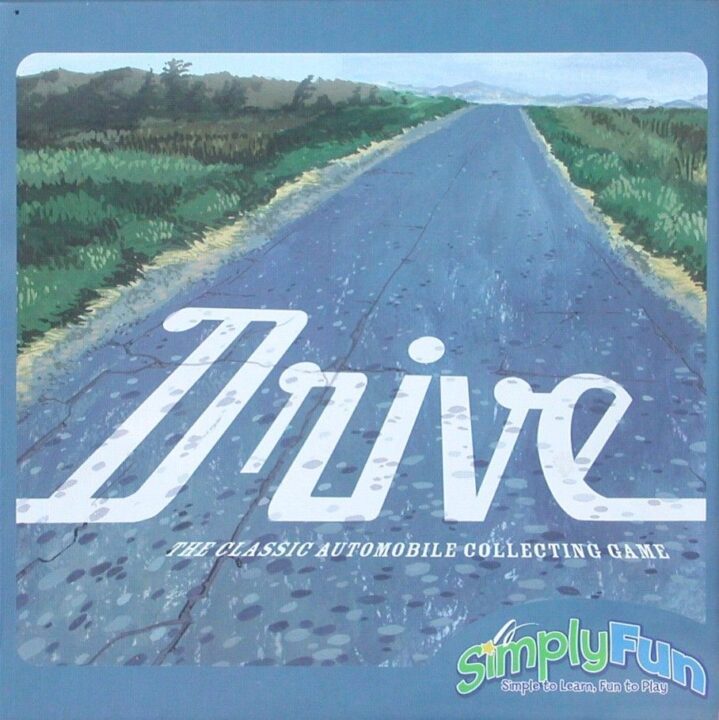Welcome to my review of the board game Drive! I roped in my friends for a wild ride and, let me tell you, things got silly fast. If you’re looking for a game night that’s full of laughs, wild moves, and maybe a bit of table-flipping, keep reading. I’ll cover what works, what doesn’t, and if Drive is really worth parking on your game shelf.
How It Plays
Setting Up
Shuffle the deck of route cards and give each player a car token. Place the board in the middle and hand out starting fuel chips. It takes less time than finding your car keys (trust me, I timed it).
Gameplay
On your turn, draw a route card and add it to your path. You can play special action cards to mess with your friends—sabotaging their route or stealing fuel. The table will get loud, especially when someone blocks your shortcut. When you run out of fuel, you’re forced to slow down, which feels very real if you once drove on empty in your mum’s car. There’s a bit of planning, a bit of take-that, and a lot of laughs.
Winning the Game
The first player to reach the finish line wins. If more than one person crosses on the same turn, the player with the most fuel left is crowned champion. Bragging is not only allowed but encouraged. It’s quick and easy, but getting there is rarely smooth—just like my last road trip.
Want to know more? Read our extensive strategy guide for Drive.
How ‘Drive’ Keeps You On Your Toes: Gameplay Mechanics and Flow
When I first sat down to play ‘Drive’, I found myself buckling up for a trip that I hoped would actually move me. The game starts easy, with each player grabbing a set of tokens and a hand of cards that, I swear, looked like a deck my dog had already chewed. But don’t be fooled—things pick up quick. The main mechanic in ‘Drive’ is hand management and route building. You need to play cards to advance your car, but here’s the twist: each card bumps you forward a certain amount, but some cards also have wild events that can mess up your neatly planned route or even throw a banana peel under your wheels. (And yes, I’ve fallen for that more than once.)
The flow is pretty snappy—turns go by fast, except when my friend Greg decides to recalculate his entire strategy every time he’s hit by traffic. The game cleverly uses a queue system, so if you’re too aggressive and go all out, you might just run out of fuel (don’t ask how I know). But if you’re too careful, you’ll get stuck behind slower players and start yelling “move it, grandma!” at pieces of cardboard. The balance between pushing ahead and managing resources makes every round feel tense but fun.
Special cards can shake things up, like sudden roadblocks or turbo boosts. Sometimes the chaos tips close to random, but it’s just shy of feeling unfair—unless you get three flat tires in a row. Not that I’m bitter or anything. Next, let’s pop the hood and see what kind of player interaction and sneaky strategies you can expect in ‘Drive’—assuming you haven’t already crashed by then.
How Players Clash and Plot in ‘Drive’
Let’s talk about the glorious chaos that is player interaction in Drive. If you think you can hide in the slow lane and coast to victory, forget it—this game is about as chill as a caffeine-fueled squirrel. Every move you make, someone is watching, scheming, and probably plotting to overtake you with a move so sneaky you’ll wonder if you’re playing with card sharks or actual squirrels in disguise.
Now, I’ve played Drive with friends who are way too competitive for their own good. It gets heated, fast. Alliances form and break in the time it takes to say, “Hey, that’s my space!” My friend Jess once blocked me three turns in a row. I considered friendship counseling. If you don’t pay attention, someone will outmaneuver you, and you’ll be left staring at your tiny car, wondering where it all went wrong.
Strategy in Drive is all about timing your moves and reading your opponents. You can’t just play for yourself—you need to keep tabs on everyone else’s plans. The tension ramps up as players get close to the finish, and sometimes, a perfectly timed card can change everything. There’s satisfaction in pulling off a clever block or a surprise move, but fair warning: your friends will hold grudges. In a good way, I promise.
If you like games where interaction is more passive, Drive might not be your road trip. But if you’re up for a bit of friendly sabotage and a test of wits, this one is a good bet.
Ready to peek under the hood? Next, let’s see how Drive looks and feels with its components and design!
Component Quality and Design in Drive: A Close-Up Look
The first time I cracked open the box for Drive, I got a little thrill—like finding cash in an old jacket. Inside, the game board hit me with clean, bold art and a layout that actually makes sense. Finally, a game that realizes we aren’t all hawks with superhero vision. The player pieces are chunky enough for my butter fingers, but not so large they block half the board like rampaging kaiju.
The cards in Drive feel sturdy—as in, I accidentally spilled some root beer on them and they survived with just a little wipe-down. Try that with any of my old Monopoly sets and you’ll be making a papier-mâché bank by round three. The colors are bright and inviting, which draws everyone to the table, even my cousin who only shows up for snacks. The iconography is clear (though the gas icon does sort of look like a cheese wedge if you squint), and I appreciate that the designers took time to make the game easy to set up and pack away. The insert actually fits the stuff! It’s a miracle.
If I have to nitpick, the player tokens sometimes lose a bit of paint after a few rowdy sessions. They’re like cars in real life—first scratch is the toughest. But overall, Drive gets a solid thumbs up for build and style. Stay tuned, because next I’m tackling how many laps you’ll want to take with Drive in the replayability and game length pit stop!
Drive Board Game: How Often Will You Really Play It?
When it comes to replayability, Drive surprised me. Usually, I avoid games that start to lose steam after two or three rounds with the same group. But Drive kept my crew on their toes. The order of the cards and the shifting objectives mean each game feels a little different. By our fifth run-through, my buddy Alex was still finding new ways to sabotage my plans — which is both annoying and a sign of good balance.
In terms of game length, Drive lands in my Goldilocks zone. Not too long, not too short. You’re looking at about 35 minutes per play, which means you can squeeze in a few rounds in a game night without everyone reaching for their phones. This makes it a solid choice for warming up the group or wrapping up the night on a competitive note. The game doesn’t drag and we never had to ask, “How much longer?” If anything, I sometimes wished it lasted just a hair longer when things got tense. (Mostly because I was behind and needed a miracle.)
If you’re the type who gets bored easily, Drive still manages to stay fresh thanks to its blend of tactics and a dash of unpredictability. Is it perfect? No — a couple of games back to back can be enough for some. But if you like replaying games to master new tactics, you’ll get your money’s worth here.
Do I recommend Drive? Yep! Unless you’re allergic to light strategy or the color red, I’d say put the pedal down and give it a spin.
Conclusion
Alright, so that wraps up my review of Drive. After many games with my pals—some friendly, some only slightly rage-filled—I’ve come to like this speedy little game. The components are sturdy (even after someone spilled cola during a sharp turn), and the quick rounds mean no one checks their phone out of boredom. It’s not super heavy on strategy, but you do get to mess with your friends just enough to make it spicy. If you’re hunting for a deep brain-burner, this isn’t it. If you want a light, replayable race with plenty of table talk and a few “I can’t believe you did that!” moments, give Drive a go. Just be ready for a little luck to tip the finish line!
That’s the end of my review. Thanks for reading about Drive! If you give it a spin, let me know if your friendships survived the chaos.


